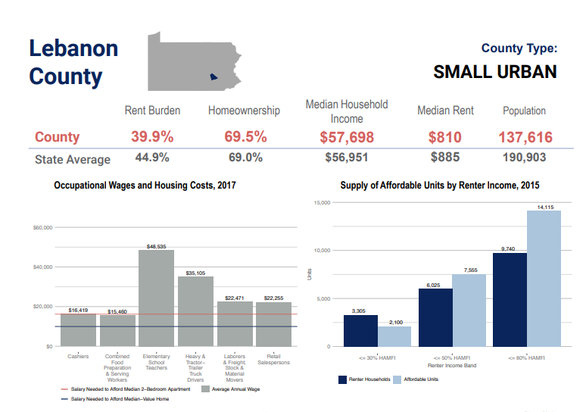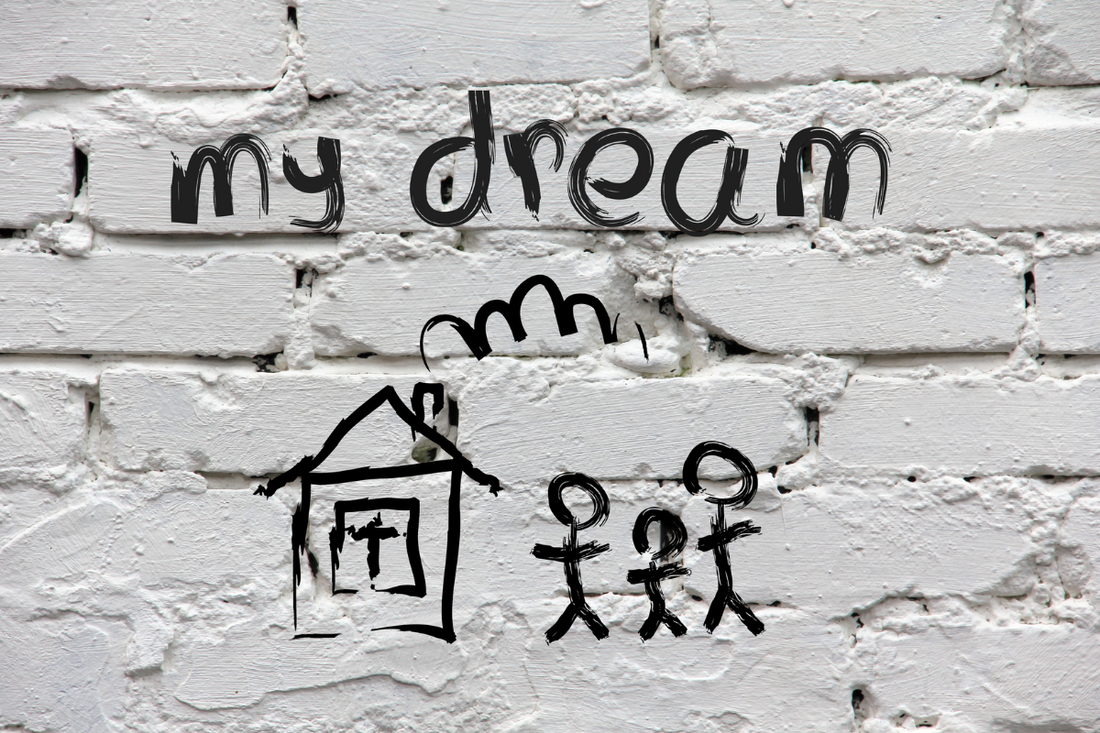|
What does homelessness look like in Lebanon County? What are the causes of homelessness? What are some local organizations doing to alleviate the issue?
Bryan Smith, LCCM’s executive director, recently asked two local nonprofit leaders these questions and more during Facebook Live chats to get a sense of the issue on the local level. Homelessness is defined in a number of different ways. There are two federal definitions coined by the U.S. Department of Education (ED) and the U.S. Department of Housing and Urban Development (HUD) At its core, homelessness is defined as an individual or family lacking a fixed, regular, and nighttime residence. The first video is Smith's discussion with Mike Ritter, co-chair of the Lebanon County Coalition to End Homelessness, who explained the big picture of local homelessness as part of LCCM's Hurdles to Housing challenge. The second is with Sue Blouch, executive director of the Lebanon Rescue Mission about the mission's role in the community, its men's and women's shelters, the different causes of homelessness between men and women, and the Lebanon Free Clinic. Here are 5 things we learned.
1. Homelessness is hard to spot in Lebanon County
When people think of homelessness, what often comes to mind are people who living unsheltered on the streets in big cities such as Washington D.C. and Philadelphia. In Lebanon County, it is not quite as apparent as in big cities.
“Commonly what we see in our communities is what’s considered doubling up…where a family doesn’t have their own place to stay, so they’re doubling up and staying in someone else’s house or apartment,” said Mike Ritter, co-chair of the Lebanon County Coalition to End Homelessness. Related How 60 days at FRESH Start helped one man save money, secure a full-time job FRESH Start a safe haven for mom, 3 kids With rental units, doubling up is often a violation of lease agreements. In those cases, people may instead “couch surf,” that is, moving from one temporary housing arrangement to another. “They’ll stay with a buddy for a couple of nights or a couple of weeks even and then hop around to another person – a family member – and they’ll just kind of go through this rotation trying to keep their helps from getting in trouble or evicted from their rental places,” Ritter said. Ritter added that individuals experiencing homelessness in Lebanon County may sleep in abandoned buildings, storage units, cars and hotels.
2. State education data give most detailed picture of homelessness in Lebanon County
A precise picture of homelessness in Lebanon County is difficult to obtain due to a lack of sufficient data collection.
The most detailed data comes from the Pennsylvania Department of Education’s 2017-18 Education of Children and Youth Experiencing Homelessness report. In Lebanon County, 716 students were identified as being homeless in some capacity – 542 alone were identified within the Lebanon School District. “We have to keep in mind those are 700 individual students who are also often times connected to a family, parents or other household members who are also likely homeless and struggling as well,” Ritter said. At LCCM’s FRESH Start Emergency Shelter & Resource Center, 126 guests were served in the 2019-20 year. Half the guests at FRESH Start at any given time are children.
3. Major causes of homelessness are varied

Some of the common, “big players” include low wages or insufficient incomes, Ritter said.
“That includes people who are employed, but not to the level or degree where they can really be self sustaining or self sufficient,” he said. In addition, unemployment is a factor, and may be more so now during the pandemic. The unemployment rate is 11.8 percent in Lebanon County, according to the latest available figures from the U.S. Bureau of Labor Statistics, a decrease from a high of 13.7 percent in April. In February, the unemployment rate for the county was 4.5 percent. These factors, Ritter says, often go together with a lack of affordable housing, which is both a national and local issue. Over one-quarter of Lebanon County - 28.2 percent of residents - live in unaffordable housing situations, according to a 2017 United Way Needs Assessment report. Unaffordable housing is defined as households where monthly costs for housing exceed 30 percent of the monthly income. Roughly 39 percent of Lebanon City residents are living in unaffordable housing situations and nearly one-fifth of survey respondents reported that affordable housing was an unmet need (18.6 percent). The poorest renter households outpaces the number of potential affordable housing units available in Lebanon County, according to a 2015 housing study by the Pennsylvania Housing Finance Agency. According to the report, there are 3,305 renter households living at or below 30 percent of the US Department of Housing and Urban Development adjusted median family income level. The supply of affordable housing units for renter households in this income level is just 2,100 units. For families with greater incomes, but who also rent, more affordable housing options are available, which means they have more options and will have an easier time finding a new rental unit. But for those rental households with the lowest income levels, who are most at-risk for eviction or losing stable housing, they will have much greater market competition, Ritter said, adding there are many other ramifications that go along with this scenario. A virtual housing summit was held Aug 11-12 to discuss local innovative housing programs, Ritter said, adding that a funding request for a local comprehensive housing market study in the works. “We want to get a baseline of post-COVID impact and then be able to track that going forward as it relates to housing,” he said.
4. Causes of homelessness tend to differ between men and women
Aside from financial and housing instability issues, there are other factors that tend to be distinctive between men and women at the local level, at least from the vantage point of Sue Blouch, executive director of the Lebanon Rescue Mission.
A cycle of relationship breakdowns often comes into play for many of the women who reside at the mission’s Agape Family Shelter. “The women at Agape just seem to young today and so they’re in insecure relationships so when those relationships break down, they’re on their own,” she said. “Now it’s them and their children, sometimes very small children. They start by going to family and living with family, which is great and works out for a short period of time and then becomes problematic for a lot of reasons." For a high percentage of men at the mission’s Men’s Shelter, drug addiction and alcoholism are common culprits, and in many instances relate back to unaddressed childhood trauma. “Alcoholism is rampant in our community,” Blouch said. “The other thing, sadly is that trauma piece – coming from a childhood of chaos and then all of a sudden ending up on the street by themselves because the chaotic environment they were growing up in was either so volatile they couldn’t stay or they just get through out and the trauma creates these behavioral issues, which creates this cycle.” Blouch noted that the men on their programs are getting younger – the youngest currently is 20 years old and the oldest men are in their 60s. “We have both ends of those spectrum's, but what’s beautiful about that picture is the older men in their 60s who spent a lifetime on the street, in and out of addictions, really spend some quality time with the young men and say ‘learn from my mistakes, do not wait until you’re 60 years old to get a handle on your life."
5. Faith-based organizations across US are at the forefront of homelessness program innovation
Almost 60 percent of emergency shelter beds, what many consider the ‘safety net of all safety nets’ for the homeless, are provided through faith-based organizations (FBOs), according to a Baylor University report that analyzed faith-based organizations in 11 U.S. cities. Other key findings include:
Blouch said that encounter broke her heart. “So, imagine what that does to someone and the level of trauma and dysfunction that this alone brings into someone’s life.”
Written by Andrea Gillhoolley, Director of Development and Marketing, Lebanon County Christian Ministries. Contact her at [email protected] or call (717) 272 4400 ext. 211 to find out how you can become a supporter of LCCM to help change lives in Lebanon County.
1 Comment
CliffOnTheRoad
8/19/2020 04:22:42 pm
Why throw dirt into a bottomless hole? When I see orgainizations providing help. esp religious ones, the givers feel good, like the shoveler who thinks he is accomplishing something. The hole, they need God in their lives and the 10 commandents. Christmas is more than buying presents for the children while stiffing the landlord. But try to tell them that and it is upon deaf ears.
Reply
Leave a Reply. |
Lebanon County Christian MinistriesArchives
July 2024
Categories |
Call Us:
Email Us:


 RSS Feed
RSS Feed